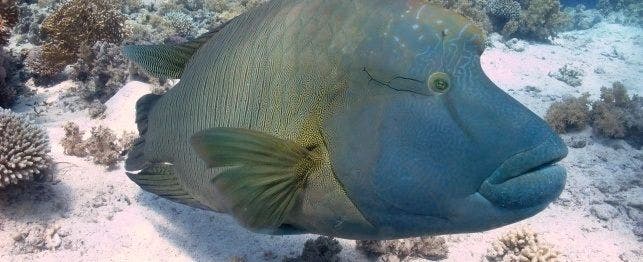
Choosing a Wrasse
The wrasse family is a group of fish found throughout temperate and tropical seas that do well in a home aquarium. They get along with most other fish, will eat just about anything you feed them, are rather tolerant of a variety of conditions and don’t need much space. They are active and entertaining to watch as they dart around the tank. They are highly recommended for the beginning saltwater fish keeper.
Known as hogfish, tamarins or tuskfish (and sometimes coris), wrasses can grow to be quite large in the wild, but in captivity they grow only to six inches. Although their body form can vary considerably, most are generally elongate, tapering toward the tail. They are mainly carnivorous, feeding on small fish and invertebrates.
To make wrasses feel at home, have an area in your aquarium with soft substrate a few inches deep, because many species like to bury themselves at night or when they are frightened. They usually remain near the bottom, staying only a dive away from safety in the soft sand. When they do get spooked, they usually dive headfirst into the substrate, disappearing in a puff of sediment. Don’t be alarmed if, when you first introduce your wrasse, it buries itself for a few days before emerging to check out its new home.
Appearance
Wrasses are brilliantly-colored with fuschias and yellows, blues and greens – and their coloration depends not only on what species they are, but also on maturity and gender. Males are usually more intensely colorful and may have feather-like extensions on their fins.
The most “famous” wrasse is the cleaner species (Labroides dimidiatus). In nature, these fish remain hidden in crevices and crannies in an area that accommodates the size of large fish such as grouper. The large fish often pulls into the wrasse’s territory, referred to as a “cleaning station,” and remains at rest for a moment, mouth agape. The wrasse comes out and goes to work like a pit mechanic at the Indy 500, scurrying around and picking parasites off the gills, skin and mouth area, and plucking off organic particles that may have stuck to the larger fish.
The large fish could easily snap its mouth shut for an easy meal, but evolution has programmed the big fish to forego this little snack, gaining much more by letting wrasse search for any unwelcome and potentially deadly hitchhikers. You can recognize the cleaner wrasse by its white underside and blue top, separated by a black band that runs along its body. Other wrasses are much more colorful.
Types of Wrasses
- The bluehead (Thalassoma bifasciatum) is a common Caribbean wrasse that is widely available in aquarium stores. This species also cleans other fish of parasites. The males have a deep blue head and a green body; the females are yellow with long dark bands along its body.
- The eclipse hogfish (Bodianus mesothorax) feeds on small invertebrates and fish and is native to Pacific reefs. The adult is mainly yellow with a brown tail end. It is commonly available in most good marine aquarium stores and is an excellent fish for the beginner.
- The twin spot wrasse (Coris aygula) is highly sought after because it is quite hardy in an aquarium and has unusual markings. Juveniles are white with black spots of different sizes on the anterior of its body and dorsal fin. Two large blotches of orange and two black spots adorn the dorsal fin. They do very well and are great for beginners. Adults are a dark red with some greenish and bluish highlights. Light colored vertical and lateral lines stripe the body and make this little Pacific wrasse look like it’s wearing plaid.
- The bird wrasse (Gomphosus varius) is also popular for marine fish keepers. It has a long snout with which it probes into crevasses and nooks for invertebrates such as crustaceans. This is a highly-sought-after wrasse because of its odd appearance. The male is green and the female is brown.
Housing
Wrasses generally like warm waters, between 75 degrees Fahrenheit and 79 degrees F, a salinity of about 1.023 to 1.027 SG, and a pH of around 8.3. They shouldn’t be kept in tanks smaller than 25 gallons, but you can keep several of them together without any behavioral problems. Hopefully, should you have a cleaner wrasse, you will not have enough parasites on your fish to keep the wrasses happy, so you will have to feed them other foods. They will eat chopped up shrimp, flakes, live brine shrimp and freeze-dried food.
Wrasses will easily breed in captivity although the success is rare. Spawning takes place at night when the female ejects several free-floating eggs into the water column that are then fertilized by the male.